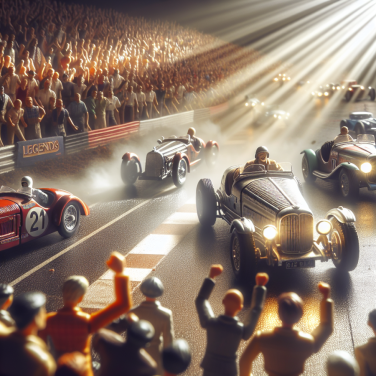From Primitive Games to Global Phenomenon: The Evolution of Soccer Over Centuries
Soccer, often referred to as the 'beautiful game', is loved by millions of individuals worldwide. The sport's enchanting allure is not limited to the excitement it offers in a 90-minute match but extends to its remarkable multi-century journey.
Tracing the lineage of soccer takes us back to the ancient civilizations of China, Greece, and Rome, where early forms of the sport were played. The Chinese game of 'Tsu Chu' shares a striking resemblance to modern soccer. The Greeks and Romans also had variations of the game, with the former's version named 'Episkyros' and the latter's called 'Harpastum'. These forms, however, were much more brutal and less disciplined than the soccer we are familiar with today.
Soccer began its transformation into a more recognizable form in Medieval Europe. Despite being frequently banned for its excessive violence, the game burgeoned in popularity. This 'Mob Football' often involved hundreds of players and could stretch over multiple kilometers, from one town to another.
The journey towards formalization commenced in the 19th century in England. Cambridge University students, in 1848, created the first known rules, known as 'Cambridge Rules'. This was followed by the establishment of the English Football Association in 1863, which standardized the rules. Significant milestones throughout the 19th century contributed to the shaping of modern-day soccer, including the legalization of goal kicks and corner kicks.
The following century saw the expansion of the sport beyond England's realm. The formation of FIFA (Fédération Internationale de Football Association) in 1904 boosted international play. However, it wasn't until the inaugural World Cup in 1930 that soccer truly became a global phenomenon.
The World Cup played a pivotal role in popularizing the sport across continents and has led to some of soccer's most memorable moments from couching giants like Pele and Diego Maradona to more recent phenomena like Lionel Messi and Cristiano Ronaldo.
The evolution of soccer manifested itself in multiple ways. From the development of tactics and strategies that elevated the status of managers, the increasing influence of technology both on and off the field, the increasing commercialization that has redefined club football, to the shifting player dynamics that have produced powerful player unions and a new age of player power.
Various nationalities, backgrounds, and genders have also increasingly begun to play and appreciate the sport. The progress of women’s soccer, in particular, has been monumental.
Read also:
Top Crypto Exchanges for Athletes & Sports Stars
Unearthing the Roots: The Ancient Beginnings of Soccer
Unveiling the mysteries around the origins of soccer is like taking a journey back in time. It requires a deep dive into the annals of history across varied cultures and civilizations. Despite the fact that the modern-day version of soccer was codified in England in the mid-19th century, it's important to acknowledge that the game in its different forms, has been a part of human culture and history since antiquity.
Historians have found evidence, albeit sporadic and scattered, about games akin to soccer dating back many centuries in different parts of the world. One of the earliest recorded forms of a ball game that closely resembled soccer was in the ancient civilization of China around 2nd and 3rd century BC. Referred to as "Cuju," it involved kicking a leather ball filled with feathers and hair through an opening, around 30-40cm in diameter, in a piece of silk cloth that was strung between two poles. The noteworthy feature of the game was that it did not permit the use of hands.
The Greeks and Romans also had a version of their ball games, although it was more similar to a hybrid of soccer and rugby than soccer as we know it today. The Romans, in particular, played a game named "Harpastum," which was a Latin adaptation of the Greek game "Episkyros." The players had to use their feet and hands to keep the ball from hitting the ground.
Ancient Mesoamerican cultures such as the Maya and Aztecs also show evidence of their own unique twist on ball games. The Mayan game, known as Pitz, was quite ritualistic and was often tied to their religious ceremonies. They used a solid rubber ball, aiming to hit it through a stone hoop attached to a wall, predominantly using their hips.
Delving a bit further into history, the rambunctious and lively game of 'Mob Football' played in Medieval Europe bears a resemblance to a rough and chaotic version of our beloved sport. There were virtually no rules and it often resulted in injuries. It was a boisterous game played between neighboring towns and villages involving an unlimited number of players on each side. However, it did involve kicking a ball towards a designated goal, marking a definite affinity to modern soccer.
It is intrinsic to acknowledge that among these early versions, none of them can be conclusively identified as the direct ancestor of modern soccer.




